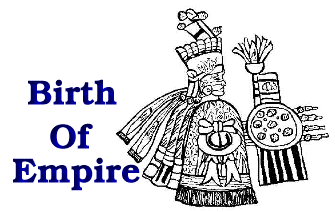|
|

After the Atzcapotzalco victory, a fearsome rite that shows how inseperable rulership, war, and human sacrifice were in ancient Mexican culture. Upon the capture of Maxtla, Netzahualcoyotl had a platform built in Atzcapotzalco to perform this triumphal sacrifice. Maxtla was brought up stripped of all signs of rank and authority. He was then held down across a sacrificial block by four attendants. With a blow from an obsidian knife, Netzahualcoyotl himself struck open Maxtla's chest and tore out the heart, scattering Maxtla's blood to each of the four directions. The body was then disposed of with the full funerary honors accorded a tlatoani.
This ritual action brought an end the power of the Tapanecs. The sacrifice marked a major social turning point, because the formerly subservient city-states of Tenochtitlan and Tetzcoco now were themselves sovereign. The overthrow of Atzcapotzalco suddenly made land and tribute available in quantities and triggered significant social change. After the troops returned home the three allied cities within the Valley divided the Tepanec land amongst themselves. Tlacopan (the junior associate) got control over the western side with its old Tepanec cities. Tetzcoco obtained control of the eastern basin with its old Chichimec towns. Tenochtitlan and Tlatelcolco were assigned control of extensive regions to the south and north.
By this time private land tenure was of two basic kinds. First came the largest holdings controlled by the tlatoani and a small class of nobles, the pipiltin, of whom many were directly related to the ruling dynasty. These lands were tended by serfs who were legally to the soil. The second form of tenure consisted of lands owned by the rulers, but awarded to leading warriors. Communal lands were held by royal palaces and temples, and the calpultin continued to be landlords at the base of the social order. These structural changes were already in progress by the time of the Tepanec war, based on the example of the Tepanecs themselves.
The war against Atzcapotzalco thus led directly to the rise of the Aztec Empire during the 15th and early 16th centuries. This involves mostly independent city-states, Tenochtitlan, Tetzcoco, and Tlacopan, each with its own tributary domain. The Mexica formed the largest and most powerful society, and Tenochtitlan was destined to become the dominant city. From the reigns of Itzcoatl and Montezuma I at Tenochtitlan, and Netzahualcoyotl in Tetzcoco, the course of empire building began to evolve in the way of warrior-nations. The social and political make-up of the highlands reflected the existence of different pollicies which included city-states, chiefdoms, small farming communities, and even semi-civilized hunting and gathering groups.
In the second quarter of the 15th century the Aztec confederation consolidated its hold within the Valley and began to reach beyond. As the campaigns unfolded it became apparent that coercion alone could not ensure the lasting success of imperial authority. Instead what they needed was a more effective system fot maintaining control. So new strategies were created and the Aztecs began to build a more complex administration and religious infrastructure
|
|

